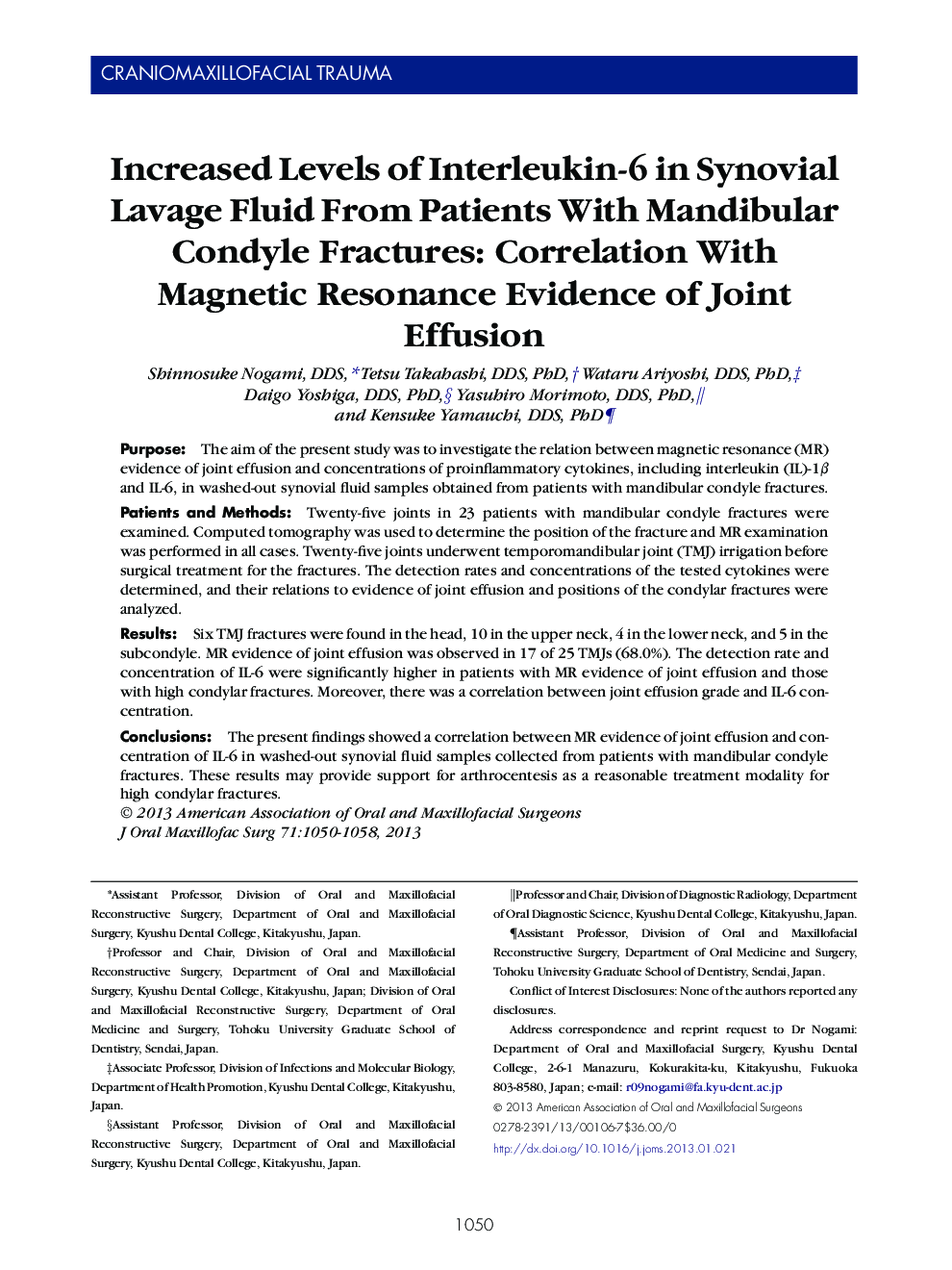| Article ID | Journal | Published Year | Pages | File Type |
|---|---|---|---|---|
| 3156428 | Journal of Oral and Maxillofacial Surgery | 2013 | 9 Pages |
PurposeThe aim of the present study was to investigate the relation between magnetic resonance (MR) evidence of joint effusion and concentrations of proinflammatory cytokines, including interleukin (IL)-1β and IL-6, in washed-out synovial fluid samples obtained from patients with mandibular condyle fractures.Patients and MethodsTwenty-five joints in 23 patients with mandibular condyle fractures were examined. Computed tomography was used to determine the position of the fracture and MR examination was performed in all cases. Twenty-five joints underwent temporomandibular joint (TMJ) irrigation before surgical treatment for the fractures. The detection rates and concentrations of the tested cytokines were determined, and their relations to evidence of joint effusion and positions of the condylar fractures were analyzed.ResultsSix TMJ fractures were found in the head, 10 in the upper neck, 4 in the lower neck, and 5 in the subcondyle. MR evidence of joint effusion was observed in 17 of 25 TMJs (68.0%). The detection rate and concentration of IL-6 were significantly higher in patients with MR evidence of joint effusion and those with high condylar fractures. Moreover, there was a correlation between joint effusion grade and IL-6 concentration.ConclusionsThe present findings showed a correlation between MR evidence of joint effusion and concentration of IL-6 in washed-out synovial fluid samples collected from patients with mandibular condyle fractures. These results may provide support for arthrocentesis as a reasonable treatment modality for high condylar fractures.
